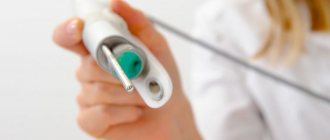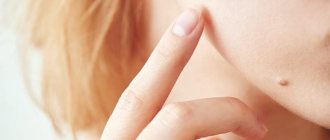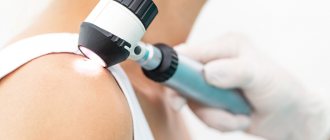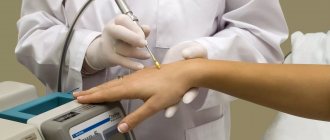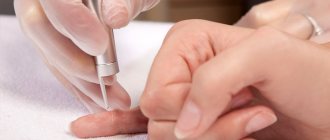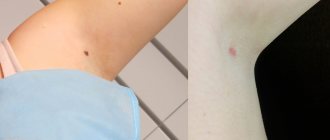Removal of tumors in Krasnodar
+7 Laser removal of moles, keratomas, papillomas, nevi, warts.
Affordable prices, quickly, without complications.
Read more…
Treatment of the wound after mole removal is no less important than the operation itself. The success of the entire operation depends on how well the healing and restoration of the skin proceeds.
If you follow the basic rules of rehabilitation, you can:
- achieve a speedy process of tissue regeneration;
- protect yourself from possible bleeding;
- relieve pain and other postoperative symptoms;
- reduce the likelihood of pathogenic bacteria and microorganisms being introduced to the damaged area;
- reduce the risk of relapse;
- prevent the appearance of scars and scars.
The wound after the removal of a mole may continue to cause concern for a long time. To reduce the likelihood of developing unpleasant symptoms, a whole range of measures is required. A doctor can prescribe the necessary course of treatment. He will also tell you how best to treat the wound. If you ignore the doctor's recommendations, the wound can turn into a non-healing weeping ulcer with accompanying symptoms such as fever, discharge from the affected area, severe pain, swelling and ultimately tissue necrosis.
If a person cannot care for the affected area on his own, help from others will be required.
Is it possible to remove nevi (can moles be removed)
Often, wanting to remove one or more moles, people ask themselves: “Is it possible to remove these moles and will this cause any harm?” This question is natural, since at the everyday level there is a widespread opinion that it is better not to touch moles. However, from the perspective of the likely development of skin cancer, removing any mole is completely safe. This means that removing a mole may not contribute to the development of skin cancer. Therefore, you can safely remove any mole that causes discomfort or creates a cosmetic defect. Any operations to remove moles are safe, since complications during their implementation are extremely rare and, in most cases, are associated with an allergic reaction to an anesthetic, bleeding, etc.
Treatment of a removed mole
What do you need to know about this? It is recommended to treat the area after removal of a mole only in consultation with a doctor. Standard care routine usually includes:
- antiseptic treatments;
- the use of healing ointments;
- dressings.
Complete healing usually takes 2-3 weeks. If the mole was large, it may take longer for the skin to recover. When choosing a treatment product, it is better to follow the recommendations of your doctor. He will prescribe medications taking into account the individual characteristics of your body.
Care for 10-14 days after the procedure
A mole has been removed - how to treat it, and how does the wound heal? Most often, 2 weeks after excision, the existing crust disappears, and in its place a new thin pink skin remains. Then you should definitely use a wound-healing ointment: “Actovegin”, “Rescuer” cream or “Levomekol”. They are used for 10-14 days.
By the end of 3 weeks everything is usually healed and treatment is stopped. But with increased sensitivity, itching may persist, and the doctor may prescribe special creams with an antipruritic effect: “Sinaflan”, “Beloderm” and their analogues. They often relieve itching immediately, from the first use.
Reparative processes are accelerated with the help of vitamin-mineral complexes, creams with hyaluronic acid, and the use of peelings.
“Levomekol”
This is a combination drug intended for local treatment of skin wounds. The product has a pronounced wound-healing, anti-inflammatory and antibacterial effect. It also relieves redness, pain and swelling. The main active ingredient of the drug is the antibiotic – chloramphenicol. The composition also contains methyluracil, which improves tissue trophism. This medicine helps to provide proper care to the area of skin damaged after mole removal.
Levomekol can be applied directly to the wound. The drug has a mild, gentle effect. This is especially true in cases of bacterial infection, when pus begins to form on the affected area. In this case, it is recommended to pre-warm the drug to body temperature.
“Levomekol” is an antibiotic ointment for wound healing. After removing the nevus, it is recommended to apply a gauze bandage soaked in this composition to the damaged area. Experts recommend using the ointment for the first 4 days after the operation.
Stages of healing
A mole has been removed - how to treat it and how does it heal? Wound healing occurs in 3 stages:
- At stage 1 – days 0-7 – there is postoperative swelling, redness and soreness. A crust forms. Treatment at this stage is carried out with antiseptic solutions or antibacterial ointments.
- At stage 2 - 7-14 days - the formed hematomas resolve, and the upper layer of the epidermis grows. The crust disappears. New skin should be protected from the sun to avoid hyperpigmentation.
- Stage 3 – day 15 and after – scar formation. At this stage, the crust has already disappeared, and Contractubex ointment will help a lot as a finish. In addition to this, the Dermatix silicone bandage, ScarFix gel, etc. show good results. Dermatix moisturizes the skin, relieves itching, and restores pigmentation, which may be disturbed due to scars.
Also commonly used wound healing patches include Cosmopor and FixoporeS.
When using a laser, by day 20 the skin is completely restored. In this case, no further care is required.
Doctors often prescribe D-Panthenol, Curiosin, and Panthenol as antibacterial ointments.
The drugs must be prescribed by a doctor. Self-medication is excluded.
A good option is Solcoseryl ointment. Its properties:
- stimulates metabolic processes in the skin;
- safe;
- actively heals.
It is applied only to a dry surface when the upper layer of the epidermis has already been formed - 5-6 days after removal of the nevus.
“Kontraktubex”
How to treat removed moles? For tissue regeneration after surgery, you can use a drug called Contractubex. It is produced in the form of a gel. The composition contains onion extract, sodium heparin, allantoin. This product has a softening, anti-inflammatory and anti-allergic effect. But its main positive effect is the inhibition of fibroblast growth. This means that this remedy prevents the occurrence of non-physiological formations.
Removal of scars after mole removal also involves the use of Contractubex ointment. It must be used at the stage of scar formation. The gel is applied daily to the problem area. Treatment can be carried out several times a day. If, after removing a mole, a large area of skin is damaged, the gel must be applied under a bandage and left overnight.
Complications
If the operation was performed incorrectly or during the post-rehabilitation period the patient treated the doctor’s recommendations carelessly, then complications are possible. The wound does not heal, turns red and begins to fester. There can be 2 reasons: pathogenic organisms (pseudomonas aeruginosa or staphylococci) entering the wound during surgery or hematogenously (if there is a chronic inflammatory process in the body). Microbes can also enter the wound from the external environment if the patient does not follow hygiene rules or with dirty water.
The fact that the removed mole has festered is indicated by 4 symptoms, which manifest themselves in an increase in temperature, the removal site turns red, swelling appears, and pus is released. In such cases, antimicrobial therapy is prescribed. For example, Baneocin powder or ointment will help heal the removal of a mole. For healing, brilliant green or potassium permanganate are also used. In any case, if the place festers, additional consultation with a doctor is necessary.
Other means
How to treat removed moles? Today, pharmacies offer a large selection of products that promote the healing of skin damage. These include:
- "Levosin";
- tetracycline ointment for external use;
- salicylic ointment;
- "Argosulfan";
- “Dermazin”;
- Vishnevsky ointment;
- boric ointment;
- "Pantoderm";
- streptocide or zinc ointment.
Before using any of the above remedies, you should definitely consult your doctor and read the instructions included with the drug.
Inflammation of a mole: what to do and how to treat
Inflammation is a nonspecific protective reaction of the body in response to the penetration of pathogenic microorganisms, exposure to chemical or physical irritants, or due to autoimmune processes.
A mole, or nevus, is a benign pigmented skin growth that becomes inflamed due to infection, contact with thermal factors, ultraviolet radiation, acids, and alkalis.
Photo 1. Tanning is a dangerous pleasure for carriers of moles. This is one of the factors that can lead to inflammation of the nevus. Source: Flickr (Martina ⚓).
Irritants
Very often, moles are exposed to all sorts of external factors. These include both natural and artificial, associated with the action of a particular person.
One of the main irritants for nevi is ultraviolet rays . Their impact can cause skin burns and, as a result, damage to the mole. This effect sharply increases the risk of melanoma , especially in the presence of dark and large nevi, which are more prone to malignancy.
Note! Artificial tanning in a solarium is no different from aggressive sun rays. Moreover, the incidence of malignancy after a solarium is 5–10% higher than after regular tanning.
Injury
Tears, scratches of moles, contact with acids or alkalis, household chemicals are extremely dangerous not only because of the risk of infection, but also due to the possible appearance of melanoma. In such cases, the damaged nevus should be removed immediately to avoid further risks.
If you did not seek help from a dermatologist in time and the injured mole became inflamed, then do not attempt treatment on your own . Independently applying all kinds of ointments with antibiotics and anti-inflammatory drugs, especially using traditional medicine, can significantly worsen the situation and delay recovery.
Inflammation of a mole during pregnancy
During pregnancy, a woman's body undergoes dramatic changes. Moles, which can appear in new places and increase in size, are also not left aside. The appearance of a large number of new nevi, especially those protruding above the skin level, inevitably leads to their periodic injury, rubbing and, as a result, inflammation.
If a woman develops moles while carrying a child in places subject to constant friction or injury, then she should wait until she gives birth and then remove them surgically to prevent melanoma. If signs of malignancy appear during pregnancy, then the treatment procedure should under no circumstances be postponed.
Symptoms of inflammation
Inflammation of a mole, like any other, consists of five main components: redness, pain, swelling, increased temperature and loss of normal function of the site of inflammation . These signs can be expressed to varying degrees depending on the location of the nevus and the degree of the inflammatory reaction.
Inflamed and itchy
Symptoms in the form of itching, slight swelling, and redness are often inherent in allergic reactions . They can develop due to insect bites, contact with allergens (pollen, animal dander, chemicals and much more).
Note! Do not comb this area under any circumstances; refuse offers to apply all kinds of ointments, compresses and heating pads. Take a diazolin or tavegil tablet under your tongue; if within 30 minutes the itching does not go away or decrease, then it is most likely not an allergy.
If there has been an insect bite (bee, wasp), then try to remove the sting , then take anti-inflammatory and antiallergic drugs (for example, analgin and tavegil), and then monitor the condition of the mole for a month. If you notice any changes, see a dermatologist immediately.
Inflamed and red
Redness, or hyperemia, is a sign of dilation of subcutaneous vessels, which occurs during both allergic and inflammatory reactions.
If redness persists for two or more days , this indicates the presence of infection .
In such cases, it is necessary to apply special ointments with antibiotics and monitor the condition of the nevus over the next 4 weeks.
Inflamed and painful
Pain indicates significant changes in the structure of the skin, which can occur with chemical and thermal burns, injuries, frostbite, suppuration, etc. The appearance of pain symptoms is an extremely unfavorable sign .
What to do if inflammation occurs
Birthmarks are less prone to malignancy than nevi. Therefore, their injuries and inflammations are not so dangerous in terms of possible complications.
Treatment of an inflamed mole
Treatment tactics include the use of antibacterial drugs (if the case requires it), anti-inflammatory drugs, analgesics .
Photo 2. In most cases, inflammation can be cured with medication, but if the mole remains red for two or more days, you should see a doctor. Source: Flickr (Luis Guillermo Pineda Roda).
Which specialist should I contact if I have an inflamed nevus?
Dermatologists are doctors who deal with all skin problems. Benign tumors and infectious skin lesions are their area of responsibility.
Drug treatment
In case of inflammation of the nevus, you can use: an antibiotic ( tetracycline ointment ) externally, NSAIDs ( analgin, nimesulide ) internally.
Treatment with folk remedies
To eliminate inflammation, take raspberries in any form and echinacea internally . Apply propolis to the mole itself twice a day.
Herbal treatment
Aloe juice, fresh potatoes or ficus leaves , which are rubbed on the inflamed area, help well against inflammation You can prepare a tincture of onion or garlic , which should also be applied to the affected nevus.
Homeopathic treatment
Homeopathic remedies such as Apis, Aconitum, Gepar sulfur, Mercurius and Pyrogenium . They should be used according to the clear instructions of a homeopathic doctor, who will tell you the optimal course and dosage of the drugs.
Surgical treatment
Opening the abscess and removing the mole is the most effective and efficient method of treatment . If there is no abscess, antibiotic treatment is carried out, after which the mole is removed, if necessary.
Removal of inflamed nevus
In the acute phase of inflammation, removal is performed only if an abscess forms .
In other cases, antibacterial and anti-inflammatory therapy is carried out, after which the condition of the mole is monitored for 4 to 5 weeks.
If signs indicating probable malignancy appear, the mole is removed and sent for histological examination.
Is it possible for a mole to recur after treatment and removal?
If the nevus was correctly and completely removed , then it is not able to appear again . The appearance of a new pigmented formation at the site of a removed mole may indicate that melanoma has developed or that the removed mole was a hemangioma - a benign tumor of small vessels and capillaries.
Possible complications and consequences
The most dangerous consequence after inflammation of a mole is its malignancy . In addition, subcutaneous cellulitis, abscesses, erysipelas of the skin and chronic foci of infection in the body may occur.
Development of cancer
The appearance of a malignant tumor on the skin can be due to several reasons:
- Spontaneous degeneration of nevus into melanoma:
- Trauma to moles, exposure to chemical or physical irritants;
- Skin cancer not associated with nevi (squamous cell, basal cell).
Thus, a mole can turn exclusively into melanoma , which is one of the most dangerous tumors. Signs of any malignancy are symptoms indicating changes in the growth and differentiation of epithelial cells. These include:
- The appearance of long-term non-healing ulcers ;
- Discharge of bloody or clear fluid from the affected area;
- Lack of clear boundaries of the neoplasm;
- Polymorphism of color and structure within one studied skin element.
Degeneration of a mole into a malignant formation
Normally, a mole has clear boundaries, uniform color and structure . No additional growths or lobules are formed on it, and no fluid or blood is released. Sometimes hair grows from nevi, which is quite normal.
Malignancy occurs due to damage and trauma to the mole. In the initial stages, the so-called “cancer in situ”, when tumor cells are located within the epithelium, do not grow into the underlying tissue and do not have their own vessels.
Next, the tumor stimulates the growth of arteries and veins, connective tissue, which leads to its spread throughout the body - metastasis. Melanoma metastasizes already in the first weeks of its appearance , which makes it extremely dangerous.
Signs of malignancy of a mole:
- Increased growth rates;
- The appearance of areas with more intense coloring or, conversely, light spots;
- Lack of clear boundaries between nevus and normal skin;
- Loss of previously present hair;
- Discharge of fluid from the nevus;
- The formation of ulcers or wounds that do not heal for a long time.
In inflammatory reactions, such signs are absent or presented in a slightly different form.
It is important! If you notice similar changes in a mole and cannot decide whether it is inflammation or the beginning of malignancy, immediately visit a dermatologist.
Source: https://best-dermatolog.ru/rodinki/vospalilas-111
Potassium permanganate solution
How to use it correctly? After removing a mole, many patients are interested in how to dilute potassium permanganate for treating wounds. An antibacterial solution is used to prevent the development of bacterial infections that can cause suppuration.
The most popular products intended for skin disinfection include potassium permanganate (potassium permanganate). It looks like a crystalline powder of a dark purple color with a metallic sheen. Potassium permanganate is a strong oxidizing agent. Even in a diluted state, it has strong properties. A 0.1-0.5% permanganate solution is best suited for treating wounds. To prepare it, you need to count out 6-8 crystals of powder. The solution is prepared in a glass container using warm water. If you cannot determine the desired proportion, you can dilute it “by eye.” After thorough mixing, the solution should have a rich color, reminiscent of red wine.
Now that you know how to dilute potassium permanganate to treat wounds, a completely logical question arises - how to apply it to damaged areas? To do this, dip a cotton swab into the solution and gently touch the surface of the former mole. It is also recommended to treat nearby areas. This procedure should be carried out daily before applying creams and ointments.
Levomekol for moles
The drug for external use has unique properties. Levomekol for papillomas ranks first among all available ointments against an unpleasant illness. The medicine has long been considered irreplaceable and is available in every pharmacy. The ointment is widely used, also against hemorrhoids, scratches, wounds, boils and other purulent and inflammatory skin problems.
Does it help with papillomas?
Can Levomekol get rid of papillomas? This effective remedy is used for almost all skin diseases. Levomekol quickly and effectively relieves bedsores, boils, and warts.
The medicine really helps to get rid of unpleasant papillomas caused by the human papilloma virus in a short time. The effectiveness of the product can be judged by numerous positive reviews from patients. In addition, doctors themselves often recommend buying a drug against papillomas.
Interesting! The medication not only removes warts, but also treats them after getting rid of them with laser and other methods. Levomekol is a superdrug used for the treatment of papillomas and after surgical removal of the growth.
Composition and mechanism of action
The drug is not absorbed into the systemic bloodstream, which allows the ointment to be used not only for papillomas in children, but also for pregnant and lactating women. Levomekol has the following pharmacological actions:
- anti-inflammatory;
- regenerative;
- antimicrobial.
The properties of the drug promote rapid tissue restoration. The drug heals quickly and removes pus.
Attention! The antimicrobial effect of the product is not reduced in the presence of purulent discharge and dead tissue.
A unique ointment for papillomas and condylomas inhibits the process of protein biosynthesis in the cell of a microorganism. Levomekol is a combination product; the ointment contains two active components - the antibiotic chloramphenicol and the immunostimulant methyluracil. Chloramphenicol has an antimicrobial effect and kills bacteria. Methyluracil accelerates cellular regeneration processes.
Basics of medication use
Levomekol is used for external use against papillomas on the face. You can add this remedy to the course of treatment of benign growths yourself, the main thing is to take into account the subtleties of therapy. How to use the ointment?
Before using the medicine for growths on the neck or other places, the skin must be cleaned of sweat and dirt. Wash the area where the medication is applied with soap and dry. The ointment is used for each growth separately; you can smear the warts with your finger or a special applicator.
The medicine is applied to the damaged or removed papilloma, then covered with a gauze bandage. Levomekol cannot be used for papillomas on the tongue. Based on the instructions, it is necessary to rinse the mucous membranes if the ointment accidentally gets on them.
You must not allow the medicine to penetrate the stomach; you will have to rinse and drink activated charcoal. It is recommended to use the medication for the first few days after removal of the growth.
In both cases, the medicine is used until the growth falls off or a hard crust forms.
Attention! During therapy, do not expose the wound to sunlight.
For the first 30 days after removal of the growth, it is forbidden to steam the skin. When going outside, cover the papilloma with a bandage and gauze bandage.
Contraindications for use
The medicine has few restrictions. The main contraindications to the use of the drug for papillomas on the body:
- chronic non-infectious disease dermatosis, affecting mainly the skin;
- inflammatory pathology of the superficial layers of the skin, accompanied by polymorphism;
- infectious diseases caused by a fungus.
Attention! Levomekol is not recommended to be taken if you have an allergic reaction to chloramphenicol, ethylene glycol or methyluracil. The medicine is allowed to be used during pregnancy, lactation and for chronic diseases of the patient.
Possible side effects
If you follow the correct use of the drug, you can avoid side effects.
Despite the high effectiveness of the drug regarding benign growths, Levomekol causes unpleasant phenomena.
Among the side effects, patients experience skin rashes that appear due to excessive use of the drug or if there is hypersensitivity to the components of the drug.
Levomekol ointment for papillomas causes inflammatory damage to the skin, which is formed due to exposure to physical, chemical and biological agents. After its use, severe itching and peeling may occur.
The medicine causes the blood vessels of the circulatory system to overflow with blood, leading to redness of the area for which the medicine was used.
The drug also causes a peculiar reaction of the body, which is allergic and is expressed in swelling of the subcutaneous tissue, skin and mucous membranes.
Cases of overdose when using Levomekoli are rare, as are the occurrence of allergic reactions. The use of ointment in the form of vaginal tampons is prohibited because it causes the development of candidiasis. It is better to choose another drug with a similar effect.
Analogs of Levomekol ointment
This product is unique and most often there is no need to replace it. However, if side effects occur or there are contraindications to the medicine, analogues can be used. What can be replaced? The medication can be replaced with Levomethyl, Netran. Vishnevsky ointment removes warts very well. You can also buy Levosin, Ichthyolka.
Cost of medicine
The effectiveness of the medicine has been proven for more than one year of use. The drug is very cheap, so all those affected by the human papillomavirus buy the miracle drug. At the Orenburg pharmacy, the price of the medicine is only 70 rubles. As you can see, even a patient in a low-paid position can afford to purchase the medicine.
Source: https://mypochki.ru/levomekol-ot-rodinok/
Fukortsin
You can also treat removed moles using a ready-made product - fucorcin. This drug is a ready-made solution of a dark red product. After its application, the skin turns a characteristic pink color. Fukortsin helps to disinfect wound surfaces and also treats bacterial inflammation. The drug is available in the form of glass bottles. It is recommended to use fukortsin during the healing of the wound surface. The composition is also applied with a cotton swab. Treatment is carried out 1-3 times a day until the problem area is completely healed.
How to treat removed moles? In addition to the agents listed above for antibacterial treatment of the affected area of the skin, you can use chlorhexidine, furatsilin, chamomile infusion, hydrogen peroxide and brilliant green.
Levomekol is a strong medicine, but doctors won’t tell you about it
Levomekol is in the medicine cabinet in almost every home. This external remedy enjoys well-deserved popularity. Thanks to its powerful antibacterial effect, it easily copes with any skin problems.
The ointment contains only two active substances: chloramphenicol (active against staphylococci and E. coli) and methyluracil (accelerates the healing process of wounds, has an anti-inflammatory effect).
Excipients contribute to the uniform distribution of the active ingredients and facilitate the penetration of the drug into the tissue. Here are the cases in which Levomekol ointment will be very useful to you:
– Burns of varying degrees. – Purulent wounds and ulcers on the skin.
- Hemorrhoids.
– For sinusitis and ear disease. - For acne. - For the gums.
1) Burns of varying degrees.
Levomekol effectively cleanses a burn wound of dead tissue. Here's how to properly treat a wound: First, wash the burn with cold water; apply the ointment to a sterile gauze pad; apply it to the wound surface; do dressings every day; Treat the burn with ointment until complete healing. For minor household burns, the course of treatment is usually 5–14 days.
2) Purulent wounds and ulcers on the skin.
Levomekol can be used to treat any wounds - insect bites, cuts, cuts, scratches, abrasions, etc.
If the wound does not fester: treat the affected area with 3 percent hydrogen peroxide and medical alcohol; Apply Levomekol directly to the wound surface; if necessary, cover the treated area with gauze and bandage it; Perform treatment once a day until the wound heals. If the wound has become suppurated: first remove everything that separates from the wound using cotton-gauze swabs moistened with an antiseptic; then place Levomekol directly into the wound; cover it on top with a gauze cloth, also soaked in ointment; if a lot of pus is released, then change the bandage with ointment several times a day; Treat the wound with Levomekol until the separation of pus stops.
3) Hemorrhoids.
Levomekol can be used for hemorrhoids only during periods of exacerbation and only for 10 days. The anus should be lubricated every day before going to bed.
Before the procedure, you should thoroughly rinse the anus with warm water and dry with a towel. The ointment helps relieve inflammation and kill pathogenic bacteria.
Remember: the ointment copes well with the inflammatory process, but for a complete cure you should take special medications that can only be prescribed by a doctor.
4) Levomekol for sinusitis and ear disease.
If you have a chronic runny nose, lubricate your nasal passages with a cotton swab containing Levomekol 1 – 2 times a day. Are you trying to cure sinusitis? Make a gauze turunda, soak it generously in ointment and insert it into the nasal passages. Then lie down, tilt your head back and stay in this position for about 30 minutes. After the procedure, remove them from your nose.
Carry out the procedure 3-4 times during the day. The course of treatment is 5–7 days. Before administering turunda, rinse your nose with salt water or normal saline. The same turundas soaked in Levomekol can be used for boils or purulent inflammation of the external auditory canal. You can leave them in your ear all night.
The course of treatment lasts 5–10 days.
5) Levomekol for acne.
Judging by the reviews, Levomekol is a very effective remedy in the fight against acne. It has powerful antibacterial properties and perfectly eliminates inflammation. Use the ointment spot on.
The use of Levomekol on large areas of skin can lead to a decrease in local immunity. Unfortunately, the ointment has only a temporary effect and does not cure the problem. In addition, the skin gets used to Levomekol very quickly. Therefore, you will have to alternate it with other means.
The maximum period of use of Levomekol for the treatment of acne is no more than 10 days.
6) Levomekol for gums.
Levomekol is also suitable for treating gums. One of the most problematic diseases in dentistry is periodontal disease. During an exacerbation, the gums become too soft and loose. Bacteria enter the opened periodontal pockets and cause inflammation. In this case, Levomekol is applied to the gums in the form of applications.
Here's how to do it correctly: first, rinse your mouth with anti-inflammatory liquid or sage decoction; Twist small bundles soaked in ointment from sterile cotton wool; Apply them to reddened areas in the mouth and leave for several hours; Repeat the procedure twice a day.
Continue treatment until painful symptoms disappear.
Remember: the use of levomekol to treat gums is only an adjuvant.
To cure the problem, consult a doctor.
Source: https://zen.yandex.ru/media/id/5d2ec8cc92414d00ad7eddea/levomekol-silnoe-lekarstvo-no-vrachi-vam-o-nem-ne-rasskajut-5d2ed4e4a98a2a00ac385f01
Plaster or bandage?
The main attributes when treating wound areas are plasters and bandages. However, instead of the usual adhesive plasters and bandages, modern medicine suggests using special devices that protect the wound and promote its speedy healing.
For poorly healing wounds, doctors recommend using a special “Hydrocol Syn” dressing. The cut is impregnated with a gel that absorbs exudate and stimulates the healing process. In addition, such a dressing does not allow water and bacteria to pass through. If there is exudation, it should be changed daily. If there is no discharge, you can wear Hydrocol Syn for several days.
Mepiform silicone patch can be used to resolve colloidal hypertrophic scars. It is produced in small cuts and bandages. If necessary, you can easily cut out an element of the size and shape you need. The treatment period with this remedy is quite long and takes up to 8 months.
What can't you do?
Many people today are interested in how scars are removed after mole removal. If you follow some recommendations, you can speed up wound healing and prevent the appearance of unsightly scars at the surgical site. During the recovery period of the skin it is not recommended:
- Expose wounds to direct sunlight. Problem areas of the skin should be covered with clothing or hats. It is also recommended to use sunscreen. It is better to avoid visiting solariums and beaches for a while. Under the influence of ultraviolet radiation, a mole can degenerate into a malignant skin formation.
- Try not to touch the injured area again. Pathogenic microorganisms can easily be introduced into the wound.
- Do not expose the painful area to injury. This can lead to a significant deterioration in the general condition, up to the need for repeated surgery.
- Under no circumstances should the crust formed during the healing process be peeled off. This will only slow down the healing process and can also cause new scars and scars to appear.
- Do not use decorative cosmetics, shower gels, scrubs and other cosmetics on the surface of the problem area.
- In the first two weeks after surgery to remove a nevus, it is better not to expose the problem area of skin to water. When swimming, it is recommended to cover this area with a bandage.
- The wound should not be rubbed, so try not to use tight clothing or hard towels.
- After removing a mole, the skin should not be overheated or overcooled. The body may react poorly to unnatural temperatures - and the patient’s condition will only worsen.
- When treating the affected area, maintain sterility. Use disposable supplies.
What care is required after mole removal?
There are a lot of different moles on the body of almost every person. Some have more, some have less. Some accompany a person from birth, others appear throughout life. They can be flat or convex, dark or light. For the most part they are safe, but...
A mole, or nevus, as it is called in medicine, is actually a benign tumor. And in some cases, it is quite possible for this tumor to degenerate into a malignant one - melanoma. This risk is especially great if the mole is constantly exposed to ultraviolet radiation or is often injured. By the way, this is why it is recommended to remove convex moles in traumatic places, without waiting for signs of degeneration.
ATTENTION. Melanoma is a fairly serious cancer that develops very quickly and quite often leads to death. The desire to remove a mole may also arise from other considerations: some particularly large moles located in open areas, for example, on the face, arms, neck or décolleté, can significantly spoil a person’s appearance. Of course, you will probably also want to remove such a mole so as not to spoil your appearance.
It is very important!
Regardless of the reason for which you decide to remove a mole, you should not go to beauty salons, which vying with each other to offer similar services, but to medical clinics, where you will be examined by an oncodermatologist and will advise which moles are really worth removing, and which ones should be left.
In addition, only a qualified doctor can correctly select the method of mole removal and determine the depth of penetration. Only in a specialized clinic is it possible to conduct histology, without which it is also impossible to choose the correct removal method.
How are moles removed?
There are several methods for removing moles, each of which has its own characteristics, indications and contraindications. The most traditional is, naturally, a scalpel. Surgical excision is a rather crude method as it leaves scars, but it is ideal for moles that extend deep into the skin.
On open areas of the body, this method is used only if the oncological nature of the nevus is confirmed. It is after this method that keloid scars often appear. After the procedure, if the wound does not bleed and there is no swelling after removal of the mole, the patient is sent home.
Electrocoagulation is a method of removing a mole using electric current. A much less traumatic method, and after it there are almost no traces. Although the risk of scar formation still remains.
The cryodestruction method is ideal for removing flat moles. The mole is frozen using liquid nitrogen. According to statistics, wounds heal faster after removal with nitrogen.
Removing moles using a radio knife is considered one of the most gentle methods, second only to laser in this regard. After it there are practically no traces left. The laser is superior in its performance to this method. In addition, cutting off a mole with a laser helps to block blood vessels, which, in turn, prevents the recurrence of the mole after removal. Laser removal is contraindicated if cancer is detected. For this reason, histology is always taken before removing moles with a laser. Unfortunately, a pathogenic mole cannot always be distinguished by eye.
Skin care after removal
What care is required after mole removal? Your doctor will tell you more about this, since a lot depends on what method was used to remove the mole. However, some general recommendations can still be given.
On average, the wound healing process takes about 2-3 weeks. However, according to plastic surgeon Elena Vladimirovna Salyamkina, if the mole had a large area, then the process may be delayed.
For the first week after mole removal, the wound is covered with a crust. Under no circumstances should it be removed, as it covers the affected area and allows new, delicate skin to grow. Also, this crust should not be wetted or exposed to any creams or other cosmetic products.
After about a week the crust will fall off on its own. In its place there will be a speck of delicate pink skin. From this time, until the skin color in this place becomes the same as the intact skin, this area must be carefully monitored. It cannot be injured and must be protected from ultraviolet radiation. To do this, you should give up tanning and cover this area with clothes. If the mole was, say, on the face, the mark from it should be smeared with sunscreen. The SPF of the cream should be at least 60. Do not think that delicate skin does not need protection in winter or in cloudy weather: its use is necessary in any weather.
Additional treatment of the mole after removal is necessary only if there are alarming symptoms and signs of infection. So, if after removal the mole gets wet, itches or rots, you need to consult a doctor to prescribe additional treatment.
The wound from surgical excision of a mole requires special care. In this case, you cannot do without antiseptic treatment. For example, using hydrogen peroxide or chlorhexidine. Yes, and scars remain more often after such a procedure, after all, in this case we are talking about a rather serious injury to the skin.
How to remove a scar or scar after mole removal?
A scar or scar after removal of a mole may occur if the mole was large or deep, if the care rules were not followed, or if an infection was introduced. There are other possible causes of scars. For the most part, they resolve on their own over time or become almost invisible.
If you observe symptoms of a developing keloid scar, the scar itches after removal of a mole, pain appears, the scar thickens and rises above the skin level, it makes sense to consult a doctor.
Special reusable patches with a silicone base also help fight scars. This patch needs to be worn for a long time. It is believed that pressure on the scar causes thrombosis of the vessels in this place, blood flow to it stops, and as a result it decreases.
If the scar is rough and unaesthetic, you can resort to plastic surgery methods, but this does not always have a positive effect. You must first consult with your surgeon.
Some patients complain that their mole has grown after removal. This phenomenon sometimes occurs, usually if the mole has not been completely removed. A relapse in itself is not scary, but it’s still worth going to the hospital. Incomplete removal of a mole is a very serious injury that can cause degeneration of even an initially safe nevus. After examination, the surgeon will decide whether the new mole can be left or whether it needs to be removed again.
vip-hirurg.ru>
Prevention of scarring
What do you need to know about this? The likelihood of scarring on the skin largely depends on the method of surgery. Most often, colloidal formations appear when moles are removed with liquid nitrogen and surgical excision. Wounds heal best when using laser, radio wave methods and electrocoagulation.
Healing also depends on proper care of the damaged area of skin. With regular dressings and the use of special healing compounds, the risk of connective tissue growth is reduced.

